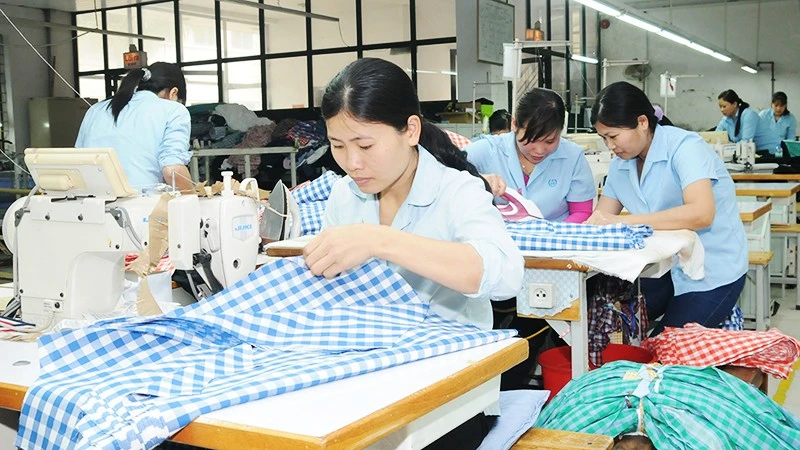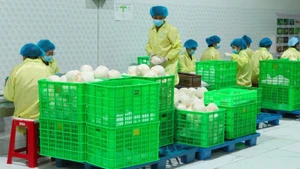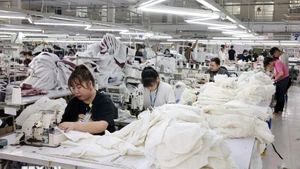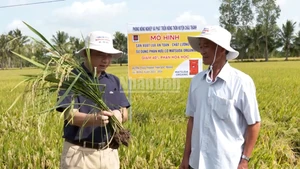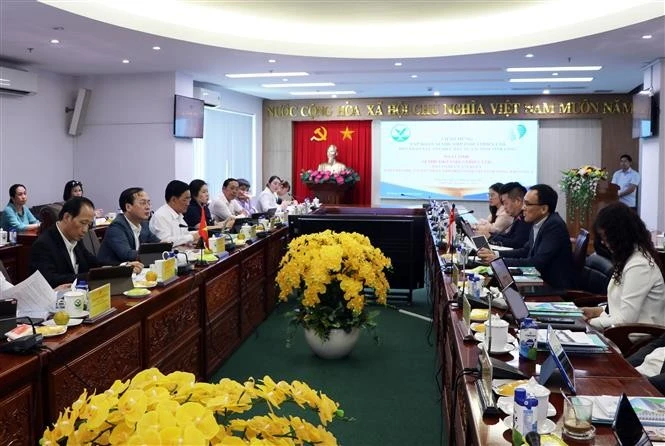According to fresh statistics from the Ministry of Finance (MoF), in the first nine months of this year, total state budget revenues are estimated to hit 51.64 billion USD, equivalent to 75.5% of the year’s plan, and down 8.3% year-on-year.
In which domestic revenues are estimated to stand at nearly 42.8 billion USD, tantamount to 76% of the year’s plan, and down 3.2% year-on-year.
The 9-month revenues from crude oil, all coming from PetroVietnam, are estimated to sit at 1.94 billion USD, equal to 109.5% of the year’s plan, but down 22.5% as compared to the corresponding period last year.
PetroVietnam reported that in the first eight months, its total revenue is estimated to reach 575.8 trillion VND (24.3 billion USD), exceeding the initial plan of 27%. Its contributions to the state budget stand at an estimated 90.5 trillion VND (3.8 billion USD), which is 16% exceeding the whole-year goal. PetroVietnam’s pre-tax profit is estimated to surpass the entire-year target by 8%.
“Petrovietnam has made non-stop efforts in implementing various solutions to improve governance and production and increase business activities to minimise disadvantages. In the first eight months of the year, almost all targets of the group were surpassed from the initial plan,” PetroVietnam said.
The group reported that in the first eight months of this year, it completed all plans assigned, including the exploitation of crude oil of 7.06 million tonnes – exceeding the eight-month plan by 14.5%, in which, domestically exploited crude oil was 17.3%, and overseas-exploited crude oil surpassing 3%; production of 108,000 tonnes of nitrate – exceeding 5.2%; electricity production of 1.07 billion kWh – surpassing 4.2%; production of 588,600 tonnes of liquefied petroleum gas - exceeding 21%; assorted fuel (4.08 million tonnes, exceeding 48%); and polypropylene (117,700 tonnes, surpassing 15%).
The MoF has also reported that in the first nine months of 2023, state budget revenues from export and import activities are estimated to reach more than 6.9 billion USD, equivalent to 68.5% of the year’s plan, and down 26.3% year-on-year.
“This means enterprises are facing massive difficulties and they have found it difficult to boost exports and imports,” the MoF said.
According to the General Statistics Office (GSO), Vietnam’s total 9-month export turnover touched 259.57 billion USD, in the first nine months of this year, down 8.2% year-on-year. In which Vietnamese exporters earned 68.86 billion USD – down 5.7% and accounting for 26.5% of the country’s total export value, and foreign exporters raked in 190.81 billion USD (including crude oil exports) – down 9.1%, and accounting for 73.5%.
For example, mobile phones and their spare parts, of which about 90% are from the Republic of Korea’s Samsung, are estimated to earn a 9-month export turnover of over 39 billion USD, down 13.4% year-on-year. Thus, it is clear that Samsung’s contribution to the state budget since early this year has decreased.
The same is also true of exports of electronics, computers, and their spare parts – which are mainly produced by many foreign firms such as Samsung, LG, Jing Gong, Daewoo Vietnam, Genesistek Vina, and FC Vietnam. Their 9-month export revenues are estimated to be nearly 42.2 billion USD, down 1.7% year-on-year.
Exporters of other key staples have also made fewer contributions to the state coffers because of a year-on-year dent in their 9-month export revenues, such as machinery and equipment (30.6 billion USD – down 10.6%), garments and textiles (25.5 billion USD – down 21.1%), footwear (14.86 billion USD – down 18.2%), and transport means and spare parts (10.26 billion USD – down 16.5%), according to the GSO.
Meanwhile, the 9-month state budget spending has also witnessed a year-on-year rise of 14.1%. It reached an estimated sum of 52.3 billion USD, tantamount to 59.7% of the year’s plan. All types of expenditures kept climbing.
Notably, the disbursement of public investment hit 15.33 billion USD – reaching 51.38% of the initial plan. This is also the first year that the economy has seen a public investment disbursement exceed 50% of the initial plan, in the first nine months.
Meanwhile, the 9-month disbursement rate last year touched 46.7% of the initial plan. Thus, this year’s 9-month disbursement has recorded a year-on-year rise of 4.68 percentage, meaning a sum of about 4.64 billion USD, according to the Ministry of Planning and Investment (MPI).
“This is quite a big result in public investment disbursement,” said MPI Deputy Minister Tran Quoc Phuong.
This has also contributed to creating a state budget deficit of 660 million USD, in the first nine months of this year. Meanwhile, in the first eight months of this year, there was a fiscal surplus of 1.83 billion USD, with budget revenues decreasing 8.8% year-on-year and budget expenditure increasing 13% year-on-year.
Earlier Prime Minister Pham Minh Chinh required ministries, state agencies and localities to disburse at least 675 trillion VND (28.46 billion USD) in public investment, or 95% of the goal, within this year.
The Asian Development Bank (ADB) proposed that effectively accelerating public investment will help Vietnam earn various positive results such as employment, and larger engagement of private investment into the economy, and this will lead to bigger contributions from enterprises to the state budget.
“It is critical to accelerate the disbursement of 29.5 billion USD in public investment. Along with the continued implementation of the stimulus programme endorsed in January 2022, this spending will generate substantial multiplier effects, creating strong motivation for the whole economy,” the ADB said. “In the long term, financial reform should continue, to reduce dependence on bank finance and enhance transparency in bond markets.”
Source: International Monetary Fund
Revenue mobilisation efforts over the medium term are needed to reverse the trend of tax erosion and create space to bolster social spending and address infrastructure gaps. Tax revenues have been eroded since their peak in the late 2000s, in contrast to trends in regional peers (and despite Vietnam’s tax rates being close to peers’ average).
Implementing the Tax System Reform Strategy 2021-2030 would help widen the tax base and enhance tax compliance. Reforms could include reducing exemptions and rationalising preferential regimes for foreign-invested enterprises, broadening the VAT base, and raising environmental tax and excise duties. The planned introduction of a unified property tax and a land registry would also be important.
Strengthening the fiscal framework and budget processes would increase transparency and enhance the quality and effectiveness of fiscal policy. The budget process has been weakened by overly conservative revenue projections in recent years. A budget based on realistic projections and assessment of risks would allow us to better decide on the appropriate fiscal space and level of spending and debt while increasing transparency.
The scope and duration of permitted carryover spending could be more limited and ensure that all spending is integrated into the budget process. It would be important to accelerate efforts to strengthen macro-fiscal capacity (projections, risk assessment, impact of fiscal measures). Conducting expenditure reviews would help identify priorities and improve the quality of expenditures.
Fiscal policy has ample space available to support growth and the most vulnerable, thanks to prudent policies. In the current environment, fiscal policy can be more effective in promoting domestic demand moving forward, given highly leveraged corporates and weak external demand. However, policy implementation should be stepped up, including addressing bottlenecks in the public investment cycle. Ramping up social safety nets and cash transfers to the most vulnerable would also help sustain more inclusive growth.
Strengthening the budget processes would ensure the effectiveness and transparency of fiscal policy. Over the medium term, further efforts are warranted to mobilise revenues to bolster social spending and infrastructure investment.


